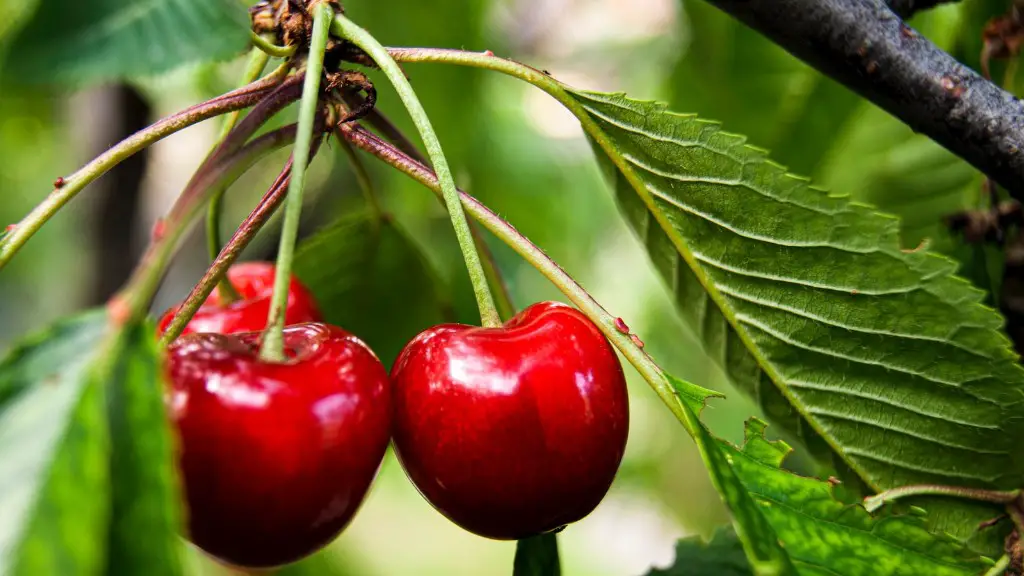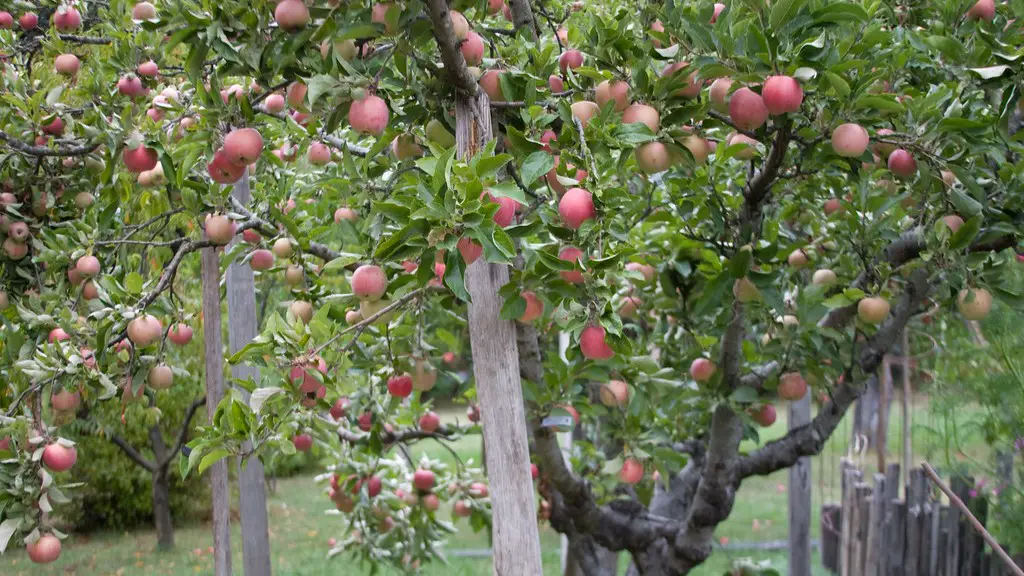Taking care of lemon trees indoors can be challenging, but with the right steps, you can be rewarded with a wealth of lemons. Here’s what you need to know to ensure your tree has the best chance at success.
First and foremost, lemon trees enjoy bright, natural light. If you don’t have a bright spot for your tree, invest in a grow light for indoor use, that has both red and blue full spectrum light. You should place the light about 3 feet from the tree, and move it closer or farther away, depending on the intensity of the light.
It’s also important to make sure the tree is consistently watered. When the top inch or two of the soil begins to feel dry, it’s time to add water. An auto waterer can be a useful tool for keeping things consistent, as it waters the tree every few days or so. Avoid overwatering though – too much water can suffocate roots and can cause the tree to start losing its leaves.
Keep in mind that you need to provide your tree with it’s necessary nutrients. Lemon trees take in a special type of fertilizer, which is higher in nitrogen than the average fertilizer. Get one that is specifically produced for citrus trees, as these fertilizers help trees stay healthy and keep producing well. Fertilize your tree every month once it begins to produce.
If it’s in your home, monitor the humidity within the room. Low humidity can cause dry leaves and buds, and dry out the soil. If your room’s humidity is low, consider investing in a humidifier to increase it. You can also mist your lemon tree twice a week, and wipe its leaves down with a damp cloth for extra humidity.
Prune your lemon tree regularly. Pruning encourages a healthy shape and allows for better airflow. Cut away dead and diseased branches and stems, and you’ll be rewarded with a healthier tree. Avoid pruning during the winter months, from November through February.
Finally, monitor your lemon tree regularly for signs of disease or pests. Lemons are usually vulnerable to fruit flies, aphids, caterpillars, mealybugs, and scale, so keep a careful eye out for these. If you notice any, treat it using an approved insecticide, and repeat the process if necessary.
Check the Soil
When caring for a lemon tree indoors, the health of the soil is of utmost importance. The soil must adequate drainage and provide essential nutrients for the tree. Regularly check the consistency of the soil – it should be loose and airy, but not too dry. Too much soil that is tightly packed around the tree can result in waterlogging.
You can make sure your lemon tree is receiving enough nutrition by using a good quality soil mix. A soil mix high in organic content is best, as it will help the soil retain moisture, and also make it easier for the roots to absorb nutrients. Make sure the soil isn’t overly dense either, as the roots need room to spread.
A good pH balance is also necessary. A slightly acidic pH between 5.5 and 6.5 is ideal. You can test the soil’s pH level with a soil test kit or strips, to make sure it is in the ideal range. If the pH is too high, you can add soil sulfur or iron sulfate to lower the pH balance.
You should also look out for signs of poor soil, such as green and yellow blotchy leaves, or excessive shedding of leaves. Inspect the trunk and roots for signs of disease, and take active steps if you find something. This can help prevent problems from worsening, and can help the tree to remain productive and healthy.
Choose a Container
When growing a lemon tree indoors, you must pay attention to the type of container that you choose. Not all containers are created equal, as different containers hold different amounts of soil. Choose a large and wide enough container to allow adequate root space, so that the tree can get the nutrition that it needs.
Wooden containers are a nice choice, as they allow the soil to breathe better. Plastic containers, however, can be too tight and can restrict the tree’s roots. Terra cotta pots are also a good choice, as they allow the soil to remain porous and breathe better. Make sure that the container has plenty of drainage holes so that excess water can be released.
Place the container in an area of the home that is well ventilated and gets plenty of natural light. You’ll also want to consider the future growth of the tree, so look for a container that is wide enough for the roots and for the tree can spread out as it grows.
Last but not least, make sure the container is strong and has no signs of damage. Check the bottom of the pot for any cracks or holes, or inspect it for any other signs of damage. If the pot is damaged, it can weaken the root system, as well as lead to waterlogging.
Humidity Control
Another important factor to consider when caring for lemon trees indoors is humidity. When indoors, the humidity is usually lower than outside, and this can have a negative effect on the tree. The humidity level should stay around 40 to 50% – anything lower than this can cause dryness and yellowing of the leaves.
The air in an indoor space can become stale and dry, due to a lack of air circulation. To prevent this from happening, run a humidifier or use a small fan to circulate the air. Also, mist the leaves of the tree twice a week with lukewarm water for extra humidity.
Finally, you can also group your plants together in one area of the room. Grouping plants together can create a micro-climate, which can help retain humidity in the air around the plants. And don’t forget to open windows to bring in fresh air. This can help restore the humdity levels in the room, and can make all the difference in keeping your tree healthy.
Cleaning and Maintenance
Cleaning and maintenance of a lemon tree indoors is important to ensure it remains healthy and productive. Every few months, take a look at the base of the tree, and remove any thick accumulations of dust and organic matter. This will ensure good air flow and can help prevent disease.
When pruning, always use sanitized pruning shears, as this can prevent the transmission of disease. Run the shears in hot water and soap after pruning, and then wipe down the blades with a paper towel. If necessary, you can also apply rubbing alcohol to the blades for extra sanitization.
When harvesting lemons, also use sanitized scissors or shears, and handle the fruit with caution to prevent bruising or damage. Disinfect scissors and shears with rubbing alcohol between rounds of harvesting, as this can help protect the fruits from bacteria.
Finally, inspect the leaves and branches of your lemon tree regularly. Check for signs of infestation, such as webbing and eggs. Make sure to spray the tree with a specially formulated insecticidal soap regularly, and treat any infestations as soon as possible.
The Last Steps
The last steps in caring for a lemon tree indoors include paying attention to the temperature, and making sure it is not exposed to any harsh chemicals or toxins. Lemon trees thrive in temperatures between 65 and 75°F, and should be kept away from drafts and from any extreme temperatures.
When it comes to toxins, look out for any sources of air pollution in your home, such as cooking fumes or chemical deodorants. Make sure the tree is far away from the kitchen, and switch any heavily scented items to more natural alternatives. This can help protect the tree from the effects of air pollution, and can help it stay healthy and producing.
Regularly inspecting the tree can also go a long way in keeping it healthy. When you notice something is wrong, try to identify it quickly and take corrective measures. This can help prevent any problems from worsening, and can ensure that your tree has the best chance at success.
Finally, remember that it takes patience and dedication when it comes to growing lemon trees indoors. With the right steps and a bit of care, you can be rewarded with a bounty of juicy lemons from your own tree.




